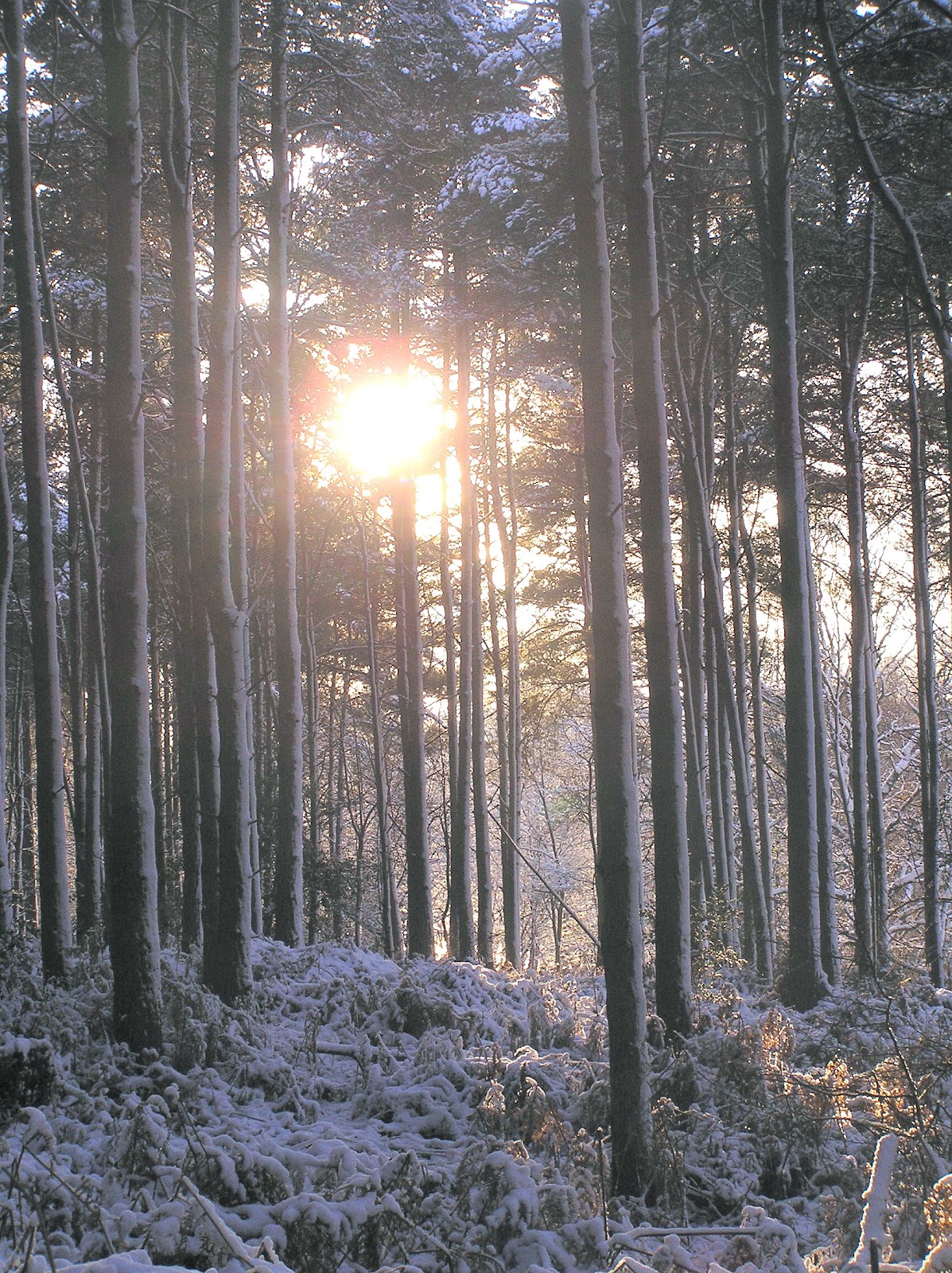The big news this month was the heavy snowfall on the night of 18th/19th December. We set off the next day, by which time of course the snow had turned to ice and we got stuck in Slaugham and had to be pushed off the ice by kindly villagers. After a long detour around Sussex we eventually arrived via Grouse Road, silent, icebound and empty apart from a large dog fox loping along the verge. The wood was completely magical - full of deer tracks and a curious robin who somehow crept into every photo frame.
A couple of days later we took four children and three adults for a pre-Christmas bonfire and picnic in the snowy wood. Using some kindling brought from home we created a lovely small fire on the remains of a rhododendron and toasted marshmallows in temperatures just above freezing. We were back on Christmas day by which time most of the snow had gone, leaving everything bare and flattened. The inevitable ancient litter was exposed and we collected a dozen jam jars, several bottles and half an old lavvy from under the yew tree!
A couple of days later we took four children and three adults for a pre-Christmas bonfire and picnic in the snowy wood. Using some kindling brought from home we created a lovely small fire on the remains of a rhododendron and toasted marshmallows in temperatures just above freezing. We were back on Christmas day by which time most of the snow had gone, leaving everything bare and flattened. The inevitable ancient litter was exposed and we collected a dozen jam jars, several bottles and half an old lavvy from under the yew tree!












